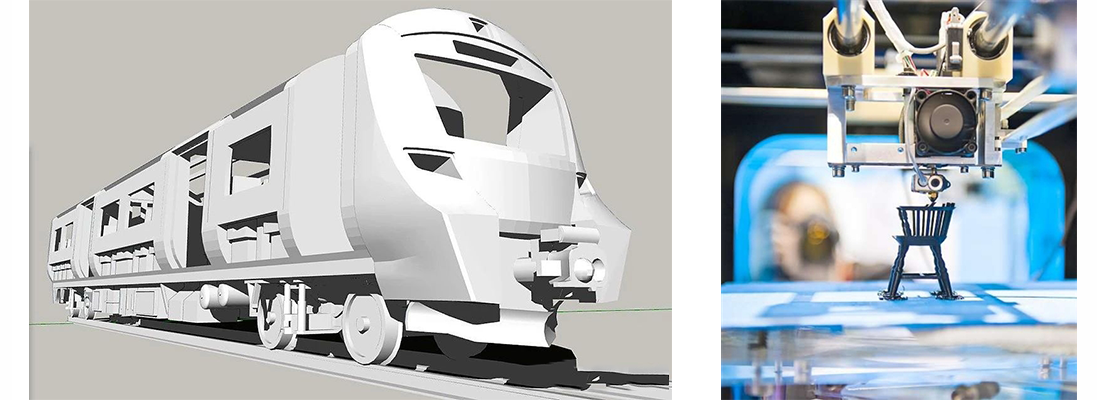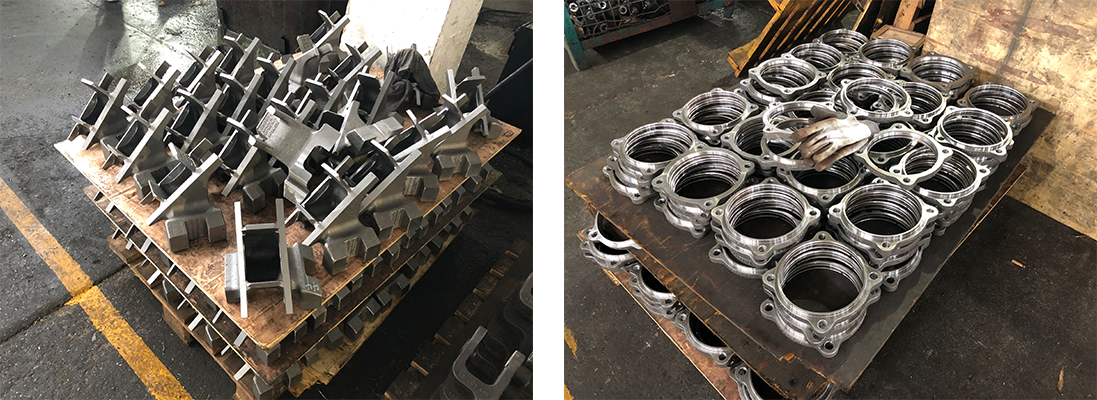- All
- Product Name
- Product Keyword
- Product Model
- Product Summary
- Product Description
- Multi Field Search
Views: 32 Author: Site Editor Publish Time: 2019-06-14 Origin: www.fuchun-casting.com
The safe and stable operation of the train can not be separated from 24 hours of maintenance guarantee every day. When the replacement parts are needed and no replacement parts can be found, the railway department should contact the manufacturer to provide them quickly. At this time, the cost of vehicle management and spare parts procurement will be relatively high.
In recent years, with the rapid development of 3D printing technology, it is faster and more economical to use 3D printing to assist train operation and maintenance, provide customized parts and replace damaged parts at any time.
The greatest advantage of 3D printing is that it can generate any shape parts directly from computer graphics data without machining or any die.
Thus greatly shorten the production cycle of products, improve production efficiency and reduce production costs.
At the same time, 3D printing can also print out some shapes that traditional production technology can not produce, and can simplify the whole production process, with the characteristics of fast and effective.
In the future, the cost of replacing parts and tools in 3D printing will be reduced by 95% compared with traditional manufacturing time.

As early as 2013, American railway operators first used 3D printing technology. They invented a hand-held automatic identification device to track vehicles and ensure that they were assembled in the right order.
A team of researchers at the University of Birmingham in the United Kingdom is also studying the use of 3D printing technology to automate repair by adding materials to the wheel surface to repair when damage is detected. By shortening the inspection time and prolonging the life of wheelset, it is possible to reduce the maintenance cost of train.
Deutsche Bank (DB), Europe's largest railway operator, launched 3D printing parts in 2016 and has produced three types of railway spare parts, namely headrest, ventilation grille and Braille sign.
With the deepening of exploration, it is expected that the future 3D printing technology combined with rapid digital modeling will penetrate into the manufacturing of more spare parts for high-speed railway operation and maintenance.
As the core manufacturer of high-speed railway, Siemens first opened the first "digital maintenance center" in Germany. The maintenance station aims to achieve the highest level of digitization in the railway industry. At present, a 3D printer for metal melt deposition modeling has been deployed.
Siemens expects about 100 trains to enter the plant every month for maintenance, while the ability to replace parts and tools with 3D printing reduces manufacturing time by 95%. They can optimize spare parts with lower cost and shorter time to achieve longer life cycle.

Facts have proved that 3D printing plays a very important role in railway operation and maintenance. By using 3D printing technology to produce spare parts, the train can run faster and inventory can be reduced.With the development of science and technology, it can be expected that 3D printing will have a wider space in the railway field.
This is where a batch of steel meets more than one specification or grade. It is a way of allowing melting shops to produce stainless steel more efficiently by restricting the number of different types of steel. The chemical composition and mechanical properties of the steel can meet more than one grade within the same standard or across a number of standards. This also allows stockholders to minimise stock levels.
For example, it is common for 1.4401 and 1.4404 (316 and 316L) to be dual certified - that is the carbon content is less than 0.030%. Steel certified to both European and US standards is also common.
There are many different types of surface finish on stainless steel. Some of these originate from the mill but many are applied later during processing, for example polished, brushed, blasted, etched and coloured finishes.
The importance of surface finish in determining the corrosion resistance of the stainless steel surface cannot be overemphasised. A rough surface finish can effectively lower the corrosion resistance to that of a lower grade of stainless steel.
Various types of stainless steel are used across the whole temperature range from ambient to 1100 deg C. The choice of grade depends on several factors:
In the European standards, a distinction is made between stainless steels and heat-resisting steels. However, this distinction is often blurred and it is useful to consider them as one range of steels.
Increasing amounts of Chromium and silicon impart greater oxidation resistance. Increasing amounts of Nickel impart greater carburisation resistance.
Austenitic stainless steels are extensively used for service down to as low as liquid helium temperature (-269 deg C). This is largely due to the lack of a clearly defined transition from ductile to brittle fracture in impact toughness testing.
Toughness is measured by impacting a small sample with a swinging hammer. The distance which the hammer swings after impact is a measure of the toughness. The shorter the distance, the tougher the steel as the energy of the hammer is absorbed by the sample. Toughness is measured in Joules (J). Minimum values of toughness are specified for different applications. A value of 40 J is regarded as reasonable for most service conditions.
Steels with ferritic or martensitic structures show a sudden change from ductile (safe) to brittle (unsafe) fracture over a small temperature difference. Even the best of these steels show this behaviour at temperatures higher than -100 deg C and in many cases only just below zero.
In contrast austenitic steels only show a gradual fall in the impact toughness value and are still well above 100 J at -196 deg C.
Another factor in affecting the choice of steel at low temperature is the ability to resist transformation from austenite to martensite.
It is commonly stated that “stainless steel is non-magnetic”. This is not strictly true and the real situation is rather more complicated. The degree of magnetic response or magnetic permeability is derived from the microstructure of the steel. A totally non-magnetic material has a relative magnetic permeability of 1. Austenitic structures are totally non-magnetic and so a 100% austenitic stainless steel would have a permeability of 1. In practice this is not achieved. There is always a small amount of ferrite and/or martensite in the steel and so permeability values are always above 1. Typical values for standard austenitic stainless steels can be in the order of 1.05 – 1.1.
It is possible for the magnetic permeability of austenitic steels to be changed during processing. For example, cold work and welding are liable to increase the amount of martensite and ferrite respectively in the steel. A familiar example is in a stainless steel sink where the flat drainer has little magnetic response whereas the pressed bowl has a higher response due to the formation of martensite particularly in the corners.
In practical terms, austenitic stainless steels are used for “non-magnetic” applications, for example magnetic resonance imaging (MRI). In these cases, it is often necessary to agree a maximum magnetic permeability between customer and supplier. It can be as low as 1.004.
Martensitic, ferritic, duplex and precipitation hardening steels are magnetic.